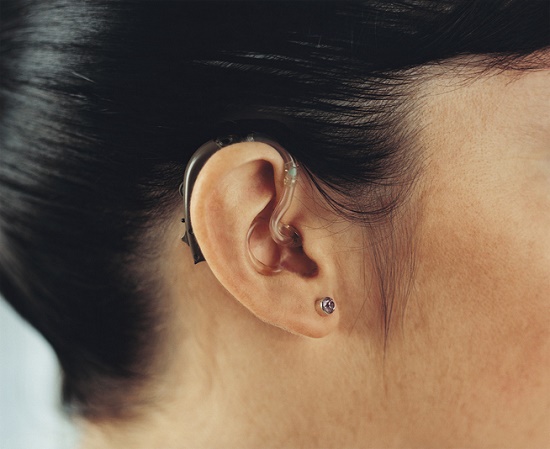
Have you ever had difficulty hearing in a crowded room or restaurant but can hear without any problem at home? Do you have particular trouble hearing higher-pitched voices or TV dialogue?
If so, you might have hearing loss, and hearing aids may be able to help you.
But how exactly do hearing aids work? Are they simple amplifiers, or something more complex?
This week we’ll be looking into how hearing aids work and how they are a bit more advanced than many people realize. But first, let’s start with how normal hearing works.
How Normal Hearing Works
The hearing process commences with sound. Sound is essentially a type of energy that travels in waves, like ripples in a pond. Things produce sound in the environment when they trigger vibrations in the air, and those vibrations are ultimately caught and transferred to the ear canal by the outer ear.
Immediately after moving through the ear canal, the sound vibrations hit the eardrum. The eardrum then vibrates, creating and amplifying the original signal which is then transmitted by the middle ear bones to the snail-shaped organ of the middle ear known as the cochlea.
The cochlea is filled with fluid and tiny nerve cells called cilia. The vibrations transferred from the middle ear bones stir the fluid and stimulate the cilia. The cilia then conduct electrical signals to the brain and the brain interprets the signals as sound.
With the majority of instances of noise-induced hearing loss, there is damage to the cilia. So, the incoming signal to the brain is compromised and sounds appear softer or muffled. But not all sound frequencies are evenly weakened. Generally, the higher-pitched sounds, such as speech, are impacted to a greater degree.
In a noisy setting, like a restaurant, your capacity to hear speech is diminished because your brain is obtaining a diminished signal for high-frequency sounds. Simultaneously, background noise, which is low-frequency, is getting through normally, drowning out the speech.
How Hearing Aids Can Help
You can understand that the solution is not simply amplifying all sound. If you were to do that, you’d just continue to drown out speech as the background noise becomes louder relative to the speech sounds.
The solution is selective amplification of only the frequencies you have a difficult time hearing. And that is only feasible by having your hearing professionally evaluated and your hearing aids professionally programmed to boost these particular frequencies.
How Hearing Aids Precisely Amplify Sound
Contemporary hearing aids consist of five internal parts: the microphone, amplifier, speaker, battery, and computer chip. But hearing aids are not just simple amplifiers—they’re sophisticated electronic devices that change the attributes of sound.
This happens via the computer chip. Everyone’s hearing is one-of-a-kind, like a fingerprint, and so the frequencies you need amplified will differ. The amazing part is, those frequencies can be determined precisely with a professional hearing test, technically known as an audiogram.
Once your hearing professional has these numbers, your hearing aid can be programmed to enhance the frequencies you have the most difficulty with, enhancing speech recognition in the process.
Here’s how it works: the hearing aid receives sound in the environment with the microphone and transmits the sound to the computer chip. The computer chip then translates the sound into digital information so that it can distinguish between various frequencies.
Then, based on the programmed settings, the high-frequency sounds are enhanced, the low-frequency background sounds are subdued, and the enhanced sound is delivered to your ear via the speaker.
So will your hearing revert completely to normal?
While your hearing will not totally revert to normal, that shouldn’t prevent you from acquiring significant gains in your hearing. For most people, the amplification provided is all they require to comprehend speech and indulge in effective and effortless communication.
Think of it this way. If your eye doctor told you they could enhance your vision from 20/80 to 20/25, would you forfeit prescription glasses because you couldn’t get to 20/20? Of course not; you’d be able to function perfectly with 20/25 vision and the gain from 20/80 would be substantive.
Are you set to find out the improvements you can attain with modern hearing aids? Give us a call today!